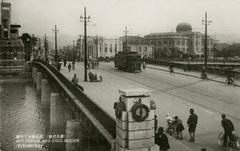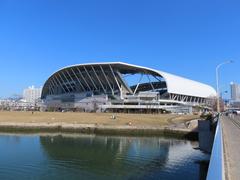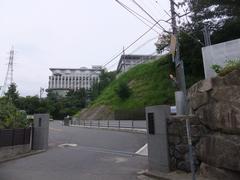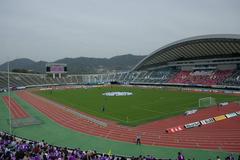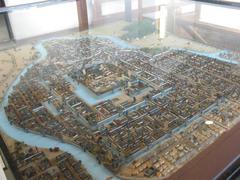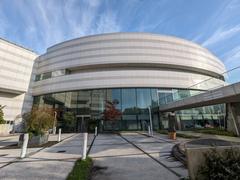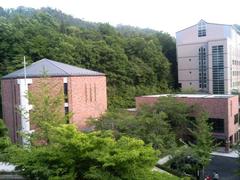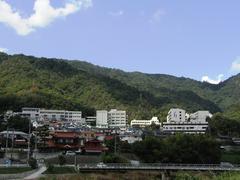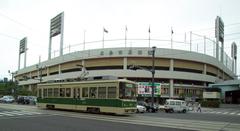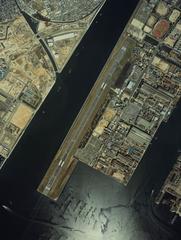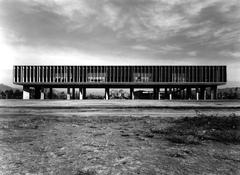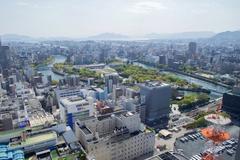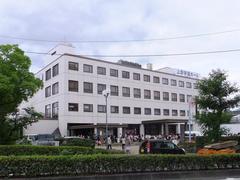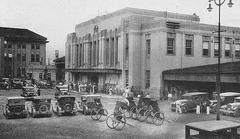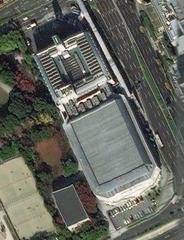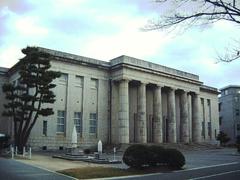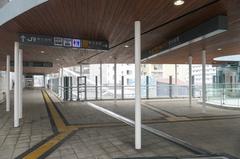Suzugamine Women’s College Hiroshima: Visiting Hours, Tickets, and Historical Site Guide
Date: 14/06/2025
Introduction
Suzugamine Women’s College (鈴峯女子短期大学, Suzugamine Joshi Tanki Daigaku), affectionately known as “Suzutan,” is a symbol of Hiroshima’s postwar resilience and a pioneering force in women’s education. Established in 1950 during the city’s reconstruction, the college fostered academic excellence, empowerment, and cultural enrichment for young women. Although it merged with Hiroshima Shudo University in 2015, the legacy and campus of Suzugamine remain vital landmarks, offering visitors a unique insight into Japan’s educational heritage and the advancement of women’s roles in society (Suzugamine Women’s College Hiroshima: Visiting Hours, History & Cultural Significance).
This guide provides comprehensive information for visitors, including campus access, ticketing, accessibility, travel tips, and nearby attractions. Whether you are a historian, cultural enthusiast, or academic traveler, Suzugamine Women’s College presents an exceptional opportunity to explore Hiroshima’s journey of recovery, education, and peace.
History and Legacy
Founding and Early Development
Suzugamine Women’s College was founded in 1950 as part of Japan’s effort to rebuild its society and expand educational opportunities for women after World War II. Operated by Suzugamine Gakuen, the college focused on empowering young women for professional and social roles during a time of evolving expectations.
Academic Structure and Campus Life
The college offered two-year associate degrees specializing in education, home economics, and the arts. Situated at 4-6-18 Inokuchi, Nishi-ku, Hiroshima City, the campus provided a peaceful learning environment close to Hiroshima’s urban center. Students benefited from a supportive community and participated in clubs, cultural events, and the annual school festival.
Merger and Continuing Influence
In April 2015, Suzugamine Women’s College merged with Hiroshima Shudo University, a move reflecting nationwide demographic and educational changes. While the college ceased independent operations, its educational ideals continue to influence the merged institution.
Visitor Information
Is the Campus Open to Visitors?
Today, the former Suzugamine campus is part of Hiroshima Shudo University. Visitors can explore the serene grounds, which maintain many original features. Public access is generally available during university open days and special campus events.
Visiting Hours and Ticket Information
- Hours: Monday to Friday, 9:00 AM–5:00 PM. Access may be restricted on weekends and public holidays.
- Entry: There is no general admission fee for campus access. Some guided tours or special exhibitions may require advance booking or tickets.
Accessibility
The campus is accessible via public transportation and is equipped to accommodate visitors with disabilities, including ramps and elevators. For the latest accessibility information, consult Hiroshima Shudo University’s official website.
Travel Tips
- The campus is a short walk from Inokuchi Station, easily reached by Hiroshima’s public transit.
- Visit during the annual school festival for a vibrant cultural experience.
- Plan your visit to coincide with other Hiroshima landmarks, such as the Peace Memorial Park and Hiroshima Castle.
Guided Tours
Guided tours can be scheduled by appointment and offer in-depth insights into the college’s history and academic programs. Contact the university in advance to book a tour.
Campus Layout and Facilities
Academic Buildings and Learning Spaces
The campus features modern lecture halls, specialized classrooms, and a well-stocked library with Japanese and English resources. Laboratories for science, home economics, culinary arts, and early childhood education are available for students and can be viewed during tours.
Cultural and Recreational Facilities
A multi-purpose hall, art studios, music rooms, and outdoor sports amenities support holistic development. The college frequently hosts cultural festivals, guest lectures, and traditional arts demonstrations, such as ikebana and tea ceremonies.
Dining and Social Spaces
A campus cafeteria offers Japanese and international cuisine, with vegetarian and allergy-friendly options. Cozy cafés and lounges provide relaxing spaces for students and visitors.
Student Support and International Services
International visitors benefit from language assistance, cultural orientation, and support services via the International Exchange Office.
Accessibility and Sustainability
The campus is fully accessible with ramps, elevators, and bilingual signage. Sustainability initiatives include recycling stations, energy-efficient infrastructure, and a focus on environmentally responsible practices.
Cultural and Social Significance
Suzugamine Women’s College is a testament to Hiroshima’s commitment to education and women’s advancement. The institution fostered civic engagement, cultural exchange, and peace education, aligning with Hiroshima’s identity as a city of peace and renewal.
Academic Contributions
Between 2000 and 2024, Suzugamine produced 139 academic publications, primarily in women’s studies, education, and the humanities, underscoring its scholarly impact.
Legacy
Alumni have excelled in education, public service, and the arts, ensuring that the college’s values endure through ongoing contributions to society.
Events and Seasonal Highlights
- Annual School Festival: Enjoy student performances, cultural exhibitions, and food stalls.
- June Hydrangea Blooms: The campus gardens are particularly picturesque during the rainy season (Japan in June).
- Special Workshops: Participate in traditional arts and seasonal cultural events.
Practical Visitor Tips
- Dress: Modest, comfortable clothing is recommended. June is warm and humid; bring an umbrella or rain jacket (What to wear in Japan in June).
- Photography: Outdoor photography is generally allowed; seek permission for indoor shots.
- Language: Basic Japanese phrases enhance the experience; English support is available.
- Transportation: Use IC cards such as Suica or Icoca for convenience on public transport (Tips for Visiting Japan in June).
Nearby Attractions
- Hiroshima Peace Memorial Park and Museum
- Atomic Bomb Dome (UNESCO World Heritage)
- Hiroshima Castle
- Shukkeien Garden
- Seto Inland Sea and Miyajima Island (Japan Guide; Dive! Hiroshima)
Frequently Asked Questions (FAQ)
Q: What are the visiting hours for Suzugamine Women’s College?
A: Monday–Friday, 9:00 AM–5:00 PM. Check for special event schedules or university holidays.
Q: Is there an entrance fee?
A: General campus entry is free; some events or tours may require tickets.
Q: Are guided tours available?
A: Yes, by appointment. Contact the university in advance.
Q: Is the campus accessible for visitors with mobility challenges?
A: Yes, with ramps, elevators, and barrier-free pathways.
Q: Can tourists visit the college as a cultural site?
A: Yes, especially during open days and cultural events.
Q: Are special events held for visitors?
A: Seasonal events such as hydrangea viewing and cultural workshops are open to visitors.
Visual Media
Safety and Local Tips
Hiroshima boasts a low crime rate and is welcoming to international visitors (Travellers Worldwide). Standard safety precautions apply. Female travelers may use women-only train cars and should be mindful in unfamiliar areas at night. During the rainy season, prepare for wet weather and possible typhoons.
Summary for Travelers
Suzugamine Women’s College is an enduring symbol of Hiroshima’s recovery, educational innovation, and women’s empowerment. Its tranquil campus, rich academic legacy, and cultural activities make it a rewarding destination. Visitors can deepen their experience by exploring Hiroshima’s historical sites and engaging with the city’s ongoing narrative of peace and resilience (Suzugamine Women’s College Hiroshima: Visiting Hours, History & Cultural Significance, Visiting Suzugamine Women’s College: History, Cultural Significance, and Essential Visitor Information in Hiroshima).
For the best visit, plan around university open days or festivals, and use official resources or the Audiala app for real-time updates and self-guided tours.
Sources
- Suzugamine Women’s College Hiroshima: Visiting Hours, History & Cultural Significance
- Visiting Suzugamine Women’s College: History, Cultural Significance, and Essential Visitor Information in Hiroshima
- Japan Guide
- Hiroshima Prefecture University Guidebook
- UOW Exchange
- Dive! Hiroshima
- Travellers Worldwide
- Japan in June
- What to wear in Japan in June
- Tips for Visiting Japan in June
- Explore Hiroshima
Explore more about Hiroshima’s educational and cultural landmarks by downloading the Audiala app for guided tours and the latest updates. Follow us on social media and visit our website for related articles and travel inspiration.
